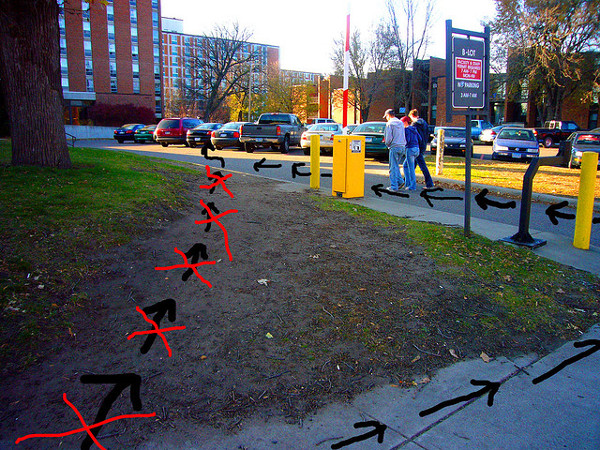In order to keep your internet presence updated with the latest changes in web technology, sometimes it becomes essential to invoke the “redesign” clause.
In fact, if your website remains stagnant for a long period of time without changes of any sort, it will send a really bad message to potential clients and visitors—some may even assume that you are ignorant of the present day trends and consider your business to be a dormant venture. Definitely not a good image to have, is it?
In this article, we shall be taking a look at certain key points that you should consider when planning a redesign of your website.
Know What You Want.
Before you actually start with the redesign process, make sure you know what you are expecting from the website redesign. It is a good idea to have a mind map of the current state of your website. Thereafter, you can mark out features or areas that need to be removed, followed by features or functionality that need to be added.
Let us, for a minute, make a “wish list” of features that you want included in your redesigned website. Now, once you have a wish list as well as an elimination list ready, it is time to give a closer look. Properly scrutinize your wish list, and mark out features that may be your heart’s cravings, but otherwise seem unrequired for your website.
For example, you may badly wish to have an additional Call To Action button on your website, but Analytics trends as well as tests conducted on your website may show that the current Call To Action button is doing just fine and adding a new one may distract the users and lead to poorer conversion rates. In this case, it is better to use your head over your heart and drop the idea of adding a new Call To Action button.
Once you have scrutinized your entire wish list, you will notice that the list of features that are actually needed will be much smaller than what you were initially expecting. Such sorting out of redesign features will save not just time and efforts but also prove to be helpful in financial terms.
Do Not Rush Things.
• If I don’t go ahead with the redesign right now. it might be delayed and even canceled.
• Oh gosh! If I do not redesign my website right away, it may not ever be redesigned!
Yeah, people actually do think like that. Don’t do it.
Instead, take your time and actually think about the redesign model. You can even conduct surveys or ask your website visitors questions about features they would like to see added or removed from the website. Yes, this might delay your redesign, but in the long run, it can come in very handy. After all, it will not make sense if you rush the redesign and end up wasting even more time on design iterations and redoing the entire thing.
You can also have long-term and short-term goals for your redesign process. By breaking and dividing your redesign process into goals, you can focus on the primary ones before the secondary ones. This can be a useful step if you are on a tight budget.
Furthermore, do not consider your work to be done once your redesign is launched. Make sure you seek your users’ feedback and ask their thoughts about the redesign. If a certain feature receives way too much negative feedback, do not hesitate in eliminating or modifying it.
Do Not Take Shortcuts.
A redesign is not just about getting a new appearance for your website. It is also about improving the overall user experience, creating a better interface and getting new visitors. Naturally, since redesigning a website has such huge implications, it makes sense to take your time and stay away from speedy shortcuts.
Once again, before you actually start the redesign, spend some time researching your users’ needs and requirements. Thereafter, ensure that each and every step in your redesign adheres to the researched needs. By doing this, you will not only save yourself the additional trouble of revising the design multiple times but also help your users in a better way.
If, on the other hand, you simply choose to have a new look and feel, without giving any thought about the pros and cons of the suggested redesign, it might be really quick, but in the long run, you will only end up wasting your efforts in a redesign that will help no one. As a result, no matter how big or small your website it, never take any shortcuts with it!
Be Future-Proof.
Remember, the internet is one of the world’s fastest evolving entities. Life span of web trends is really short, and so is the user’s attention span. As a result, it is always a smart choice to ensure that your website has ample room for growth and newer innovations, as and when the need arises.
For instance, while skeuomorphism was really in vogue some years back, it has fallen out of favor nowadays. How about Flash? It surely was popular not so long ago, but in came HTML5, and out went Flash. As a result, when redesigning your website, ensure that you have planned with the future in mind.
Of course, unless you have supernatural skills, you cannot be expected to predict the future. Being practical, you should stay aloof from trends that are growing old, or are likely to be replaced by newer trends. Thus, while you should surely have a responsive website, you should also retain some room for mobile customization and apps, if ever needed.
As your business grows, your website too should have the future scalability advantage in its favor in order to meet the needs of your growing client-base.
To Sum It Up…
Website redesign is a long and complex process. The smartest thing to do is to start small, and focus both on short- and long-term goals. Agreed, redesigning a website may seem like a steep slope, but if you take one step at a time, it will turn out to be a wonderful experience.
Once again, the key note is to ensure that the redesigned website is better suited to help your visitors as compared to the older one. Plus, while improving things, a good redesign process also has scope for scalability, as discussed above. Once you combine improved user experience with enhanced usability and scalability, you have attained the recipe for success!
When’s the last time you saw a site that could really use a redesign?
Images: Pete Lambert | the workroom | Ian Summers | TedSher | al shep
 Sufyan bin Uzayr is a freelance writer and Linux enthusiast. He writes for several print magazines as well as technology blogs, and has also authored a book named Sufism: A Brief History. His primary areas of interest include open source, mobile development and web CMS. He is also the Editor of an e-journal named Brave New World. You can visit his website, follow him on Twitter or friend him on Facebook and Google+.
Sufyan bin Uzayr is a freelance writer and Linux enthusiast. He writes for several print magazines as well as technology blogs, and has also authored a book named Sufism: A Brief History. His primary areas of interest include open source, mobile development and web CMS. He is also the Editor of an e-journal named Brave New World. You can visit his website, follow him on Twitter or friend him on Facebook and Google+.





1 Comment